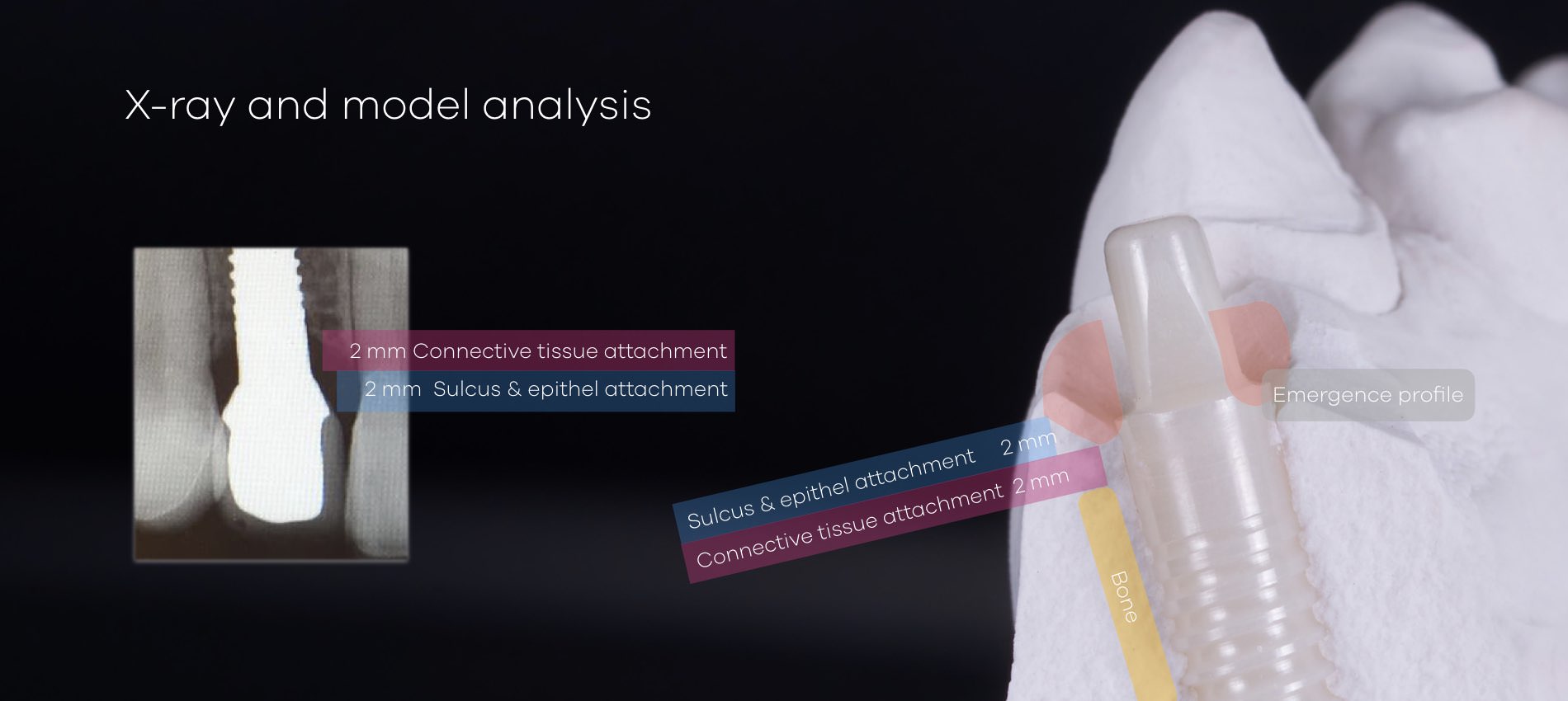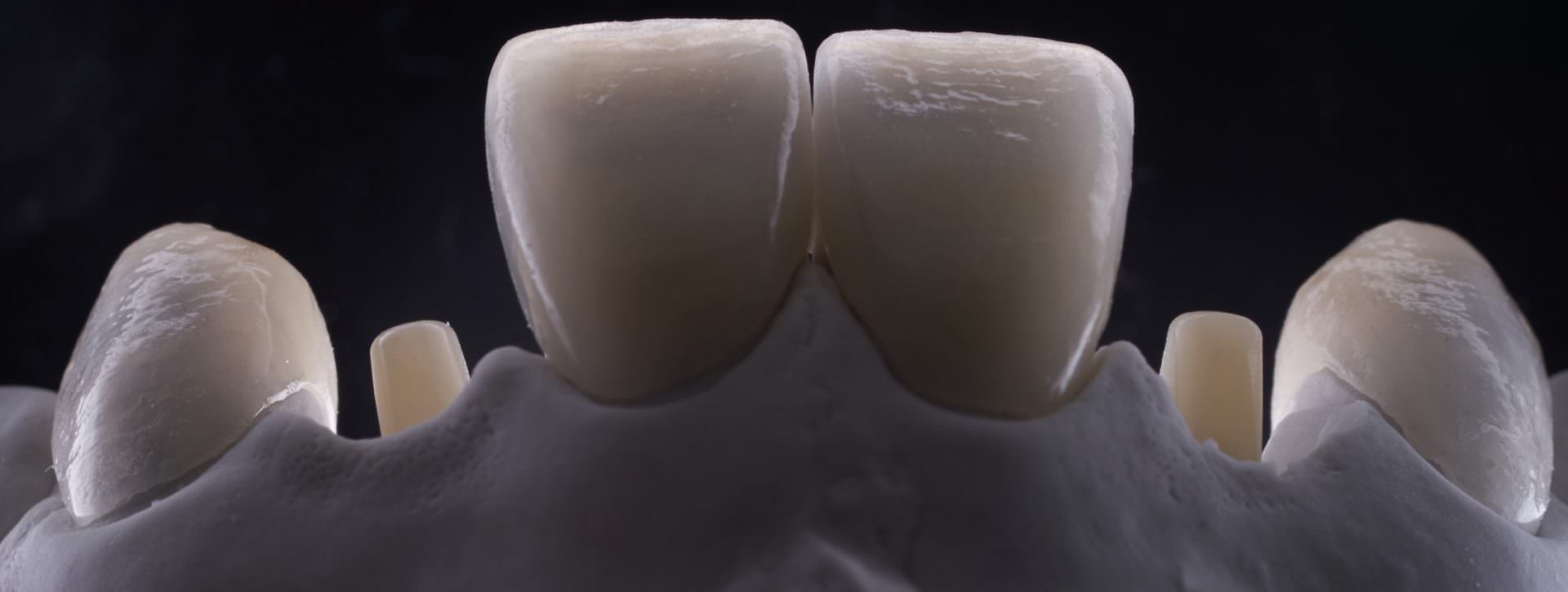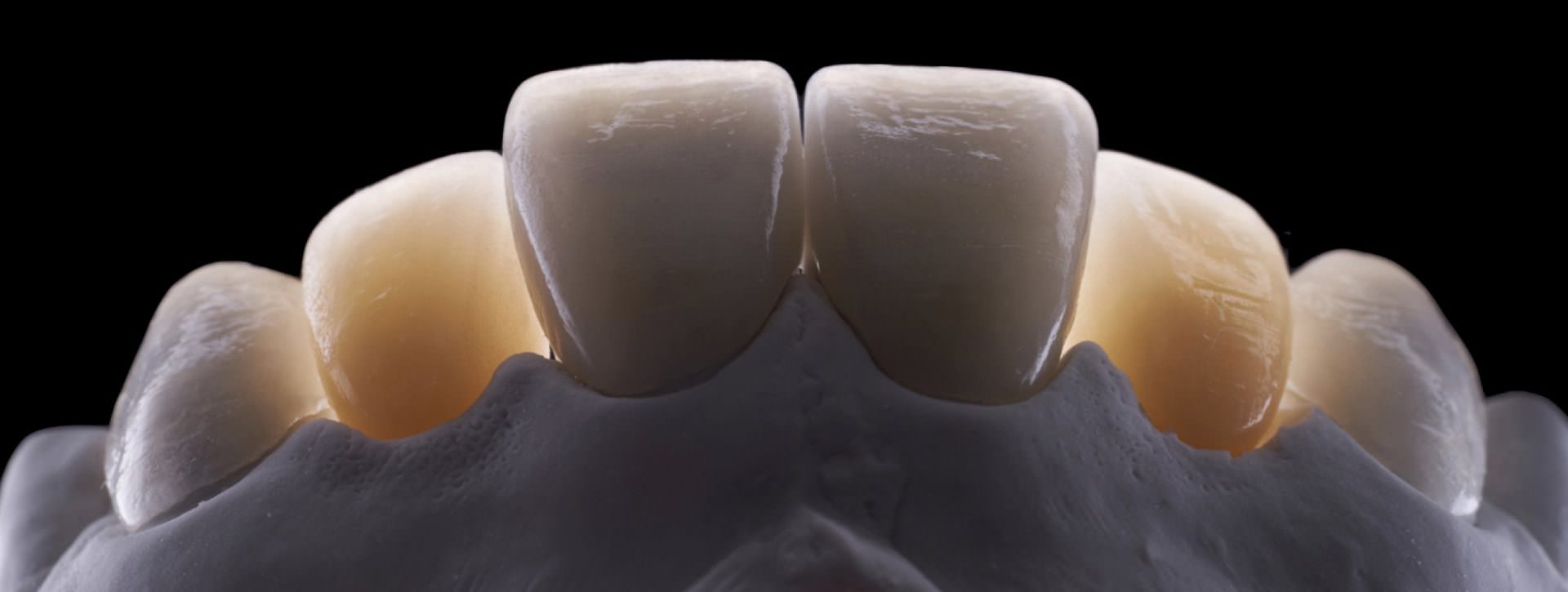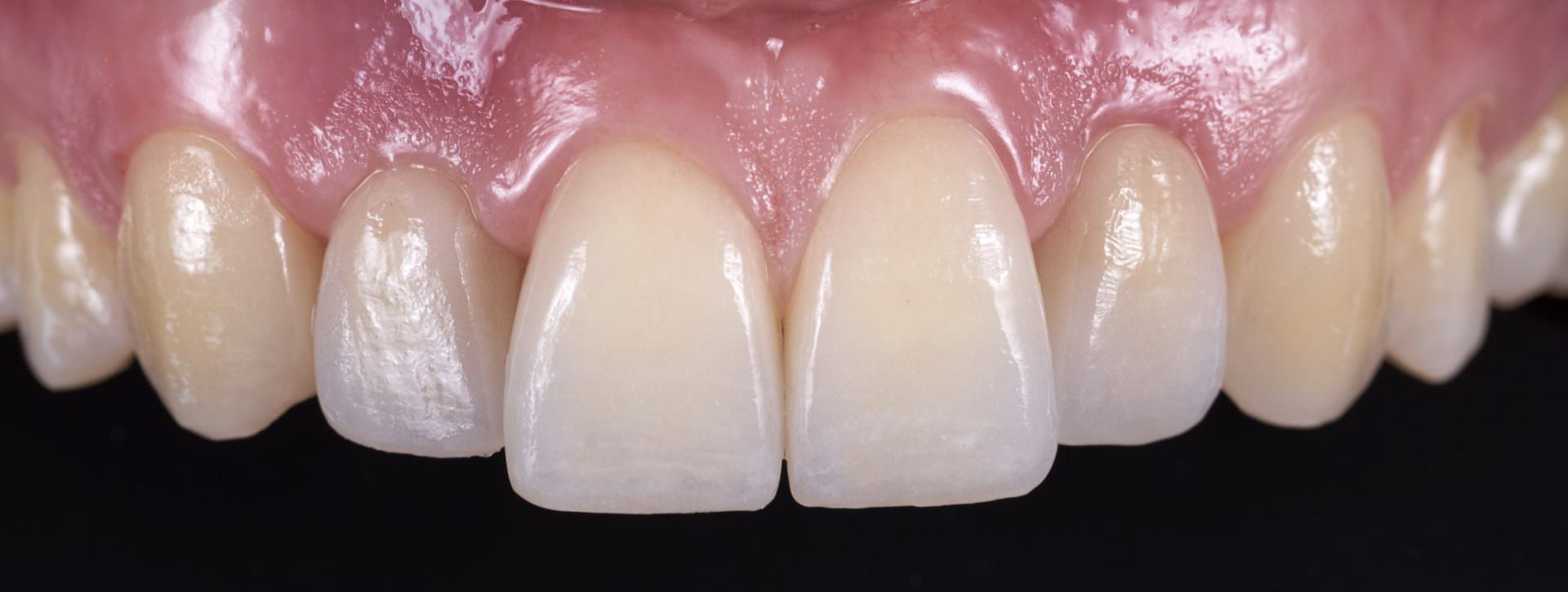Zirconia dental implant - Planning and Procedure
Planning a anodontia (hypodontia) treatment: Advantages of a zirconia dental implant compared to a traditional titanium implant.
Our patient suffered from anodontia (hypodontia) of the lateral incisors. This led to phonetic problems and dysfunction of the occlusion. Above all, the partial anodontia affected the patient’s psychological well-being.
After weighing up all the advantages and disadvantages of the various treatment concepts, the patient and the treatment team decided in favor of two all-ceramic implants from Straumann®.
In addition, the upper central incisors and the two canines were restored with veneers to correct the deviating center line in the upper jaw, to optimize the tooth proportions with regard to phonetics and to adjust the anterior canine guidance.
Traditionally, dental implants have been made from titanium or titanium alloys. Alternatively, zirconia-based implants have been developed with similar characteristics of functional strength and osseointegration. Ceramic implants offer advantages in certain settings in patients who object to metal dental implants.
In the presented case:
For the treatment of the anodontia new Monotype 3.3 mm full ceramic implants of the latest generation were used. The implants were made of zirconia and had a micro-rough surface topography. To our advantage the ZLA™ surface by Straumann® has similar properties to the well-known SLA surface.
Learn more about the treatment concept in our tutorials and publications!




